Many people like mathematics because it gives definite answers. Things are either true or false, and true things seem true in a very fundamental way.
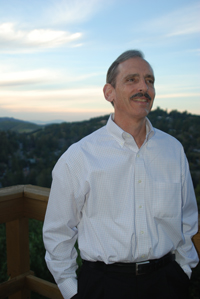 Hugh Woodin.
Hugh Woodin.
The fact is, however, that mathematics has been moving on somewhat shaky philosophical ground for some time now. With the work of the logician Kurt Gödel and others in the 1930s it became clear that there are limits to the power of mathematics to pin down truth. In fact, it's possible to build different versions of mathematics in which certain statements are true or false depending on your preference. This raises the possibility that mathematics is little more than a game in which we choose the rules to suit our purpose. Good-bye to the beautiful Platonic notion of an eternal and independent mathematical truth.
But there may be some ground for optimism. At the International Congress of Mathematicians last year Plus talked to the mathematician Hugh Woodin, who believes that although many distinct mathematical "universes" are possible, one may soon be singled out as what you might consider the "right one".
Numbers from nothing
Woodin works in set theory, an area that lies at the very foundation of mathematics. A set in mathematics is just a collection of objects — what these objects are doesn't matter. They could be numbers, symbols, triangles, or a mixture of them all. Sets are written using curly brackets, for example the set containing the numbers 1,2,3 is written as  The members of a set are called its elements. Importantly, a set can itself be an element of another set. For example, if you consider the contents of your shopping trolley as a set, then the bag of oranges you bought is itself a collection of things and therefore a set.
The members of a set are called its elements. Importantly, a set can itself be an element of another set. For example, if you consider the contents of your shopping trolley as a set, then the bag of oranges you bought is itself a collection of things and therefore a set.
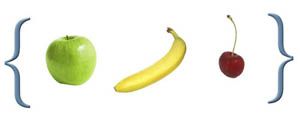 A set is a collection of objects.
A set is a collection of objects.
That the harmless notion of a set should be so fundamental to mathematics may seem surprising, but it turns out that pretty much all mathematical objects can be described in the language of sets.
As an example, think of the natural numbers 0, 1, 2, … . If you met an alien who had no conception of numbers, but understood sets, you could define the numbers recursively as follows.
- 0 is the empty set, denoted
 , that is the set with nothing in it.
, that is the set with nothing in it. - 1 is
 the set containing only the number 0 (which we've just defined).
the set containing only the number 0 (which we've just defined). - 2 is
 the set consisting of the two previous numbers.
the set consisting of the two previous numbers. - 3 is

- Etc
- In general, the number
 is the set
is the set  containing all the previously defined numbers.
containing all the previously defined numbers.
This hierarchical definition immediately gives you the ordering of the numbers, as well as a notion of what it means to add 1 to a given number: you simply go one up in the hierarchy. These two notions are enough to give you all of arithmetic, since addition and multiplication just correspond to repeatedly adding 1s and subtraction and division are their reverse. Thus, the arithmetic of the natural numbers can be built, literally, from nothing, using only the notion of sets. And as it turns out, virtually every other mathematical object can be constructed from sets too.
The road to infinity
Perhaps the most important property of sets is that they give us a glimpse of the infinite. As the mathematician Georg Cantor noted in the late nineteenth century, to see if two sets  and
and  have the same number of elements, you don't need to count them. All you need to do is match each element of
have the same number of elements, you don't need to count them. All you need to do is match each element of  with exactly one element of
with exactly one element of  , so that no elements in
, so that no elements in  have the same partner in
have the same partner in  . If you can do that without any left-overs in either set, then the two sets have the same size, or as mathematicians say, the same cardinality.
. If you can do that without any left-overs in either set, then the two sets have the same size, or as mathematicians say, the same cardinality.
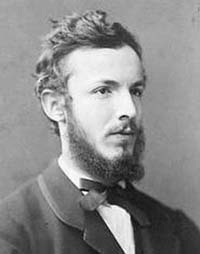 Georg Cantor.
Georg Cantor.
Now take two infinite sets, for example the set  containing all the natural numbers and the set
containing all the natural numbers and the set  containing all the even numbers. Each element of
containing all the even numbers. Each element of  can be matched with exactly one of
can be matched with exactly one of  as follows:
as follows:
| N | 1 | 2 | 3 | … | n | … | E | 2 | 4 | 6 | … | 2n | … |
So even though the two sets are infinite, and one is contained in the other, we can say that they have the same cardinality.
What Cantor also showed, however, is that it is impossible to find an exact matching between the natural numbers and the real numbers (the reals are all the numbers that lie along the number line). There are "more" real numbers than natural ones because however you match natural numbers with reals, there will always be reals left over.
This suggests that there are two different types of infinity, one bigger than the other. The first, the infinity of the natural numbers, is what is called a countable infinity. The second infinity is called the continuum. The question of whether there's an infinity "in-between" these two turns out to be a can of worms to which we'll return later.
Cantor didn't stop at these two types of infinity, but actually defined a whole hierarchy of them, each bigger than the one before. He called these infinities cardinal numbers and even found a way of doing arithmetic with them. Each cardinal number measures the size of infinite sets with certain properties. (You can find out more about this construction in the Plus article Cantor and Cohen: Infinite investigators.)
Ever since Cantor's work, mathematicians have extended his gallery of infinity, adding ever larger infinite monsters. The structure that emerges is truly compelling. "The remarkable thing is that there are many different ways in which one might approach formulating a hierarchy of large cardinals," explains Woodin, "but all the approaches end up with the same hierarchy. There are very deep theorems saying that one notion of infinity is exactly measured by another. That in part justifies the claim that the hierarchy of infinity is the fundamental core of set theory."
Formal mathematics
Spurred on, in part, by the abstract power of sets, mathematicians at the beginning of the twentieth century thought themselves on the verge of achieving an ancient dream: to put all of mathematics on a watertight logical footing and show that it contains no contradictions. This may sound strange, since mathematics is the most rigorous of disciplines. But the fact is that it's full of hidden assumptions and leaps of faith. For example, in our definition of the natural numbers above we've implicitly assumed that there is such a thing as the empty set.
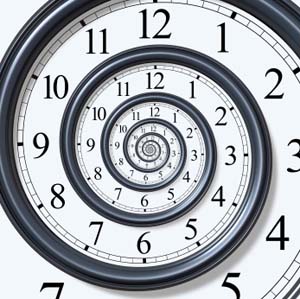 Cantor realised that there are more real numbers than natural numbers. This was just the beginning of a hierarchy of infinities.
Cantor realised that there are more real numbers than natural numbers. This was just the beginning of a hierarchy of infinities.
To eliminate such grey areas from mathematics, you need to build it up as a formal system. You need a clear statement of the assumptions you're prepared to accept without proof — these are called your axioms. You also need to be clear about the rules of logical inference you consider valid, for example rules like "if x=y and y=z, then x=z". You then only consider a statement to be true if you can deduce it from the axioms using your rules of inference.
Set theory seemed to provide the perfect setting for such a formal system. Virtually all mathematical objects can be defined in the language of sets and the notion of a set is simple enough to come up with a relatively short and sharp set of axioms. This mathematicians duly did. Ernst Zermelo and Abraham Fraenkel came up with a set of eight axioms, known as the ZF axioms, which include the assertion that the empty set exists, as well as other rather intuitive statements such as "two sets are equal if and only if they have the same members" (click here for a complete list of the ZF axioms). The set of axioms most commonly used today is made up of the ZF axioms together with the rather intriguing axiom of choice. They are known as the ZFC axioms.
Incomplete mathematics
The axiomatic dream was shattered in the 1930s, in particular by two results proved by the mathematician Kurt Gödel. A consequence of Gödel's famous incompleteness theorems is that within any formal mathematical system that describes the arithmetic of the natural numbers there will always be statements that can't be proved either true or false from the axioms. As Gödel put it in a letter to Zermelo, "For every formal system there are statements which are expressible within the system, but which may not be decided from the axioms of that system." (You can read more about the incompleteness theorems in the Plus article Gödel and the limits of logic.)
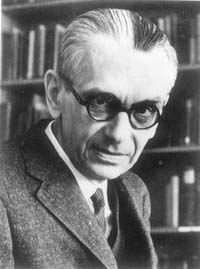 Kurt Gödel
Kurt Gödel
So what kind of statements are undecidable within the ZFC axioms? We have already encountered one above. As Cantor noted, the infinity of the continuum is "greater" than that of the natural numbers. The assertion that there's no infinity "in-between" the two is known as the continuum hypothesis. It turns out that within the system based on the ZFC axioms, the continuum hypothesis is unprovable. It's neither true nor false, it's simply beyond the limits of ZFC. (You can find out more about the continuum hypothesis in this Plus article.)
This is rather shocking, since naively we might feel that questions like the continuum hypothesis should have an answer. Perhaps, the ZFC axioms are not strong enough and we need to add a few more? We could even add the continuum hypothesis itself as an axiom, in other words we could agree to accept it without proof. (This did in fact happen with the axiom of choice, see the Plus article Cantor and Cohen: Infinite investigators.)
However, this approach is problematic. Firstly, as Gödel's result proves, any new system with whatever extra axioms will also contain undecidable questions. Secondly, there are many, many results which are undecidable in ZFC set theory. Adding axioms all over the place just in order to settle them may not only introduce contradictions, but smacks of cheating.
So what does this mean for mathematical truth? "One can take the view, and some have, that the ubiquity of unsolvable problems in set theory is an indication that set theory is a result of an excess of human imagination and that there's no meaning there. It's just a result of our biological hard-wiring," says Woodin. "I don't think that's true, but until we discover a new civilisation and see if they have the same mathematics as we do, it's hard to tell for sure."
The missing axiom
There is, however, a middle way, which doesn't involve searching for alien life. The accepted axioms of set theory are themselves products of human invention.They have been chosen because they "feel" natural and reflect our intuition of what sets are and of the nature of infinity. Perhaps there is an extra axiom (or several of them), which complete this intuition in a meaningful way. If we add them, we would still be left with undecidable questions, but perhaps we could settle a large proportion of the avalanche of undecidability that has cascaded over set theory. "One might say this is just a game, you're just choosing the axioms to solve your problem," says Woodin. "But not quite. There are basic fundamental intuitions that frame set theory. If you find an answer based on the extrapolations of those principles, then that's not just a game. It's saying that the ZFC axioms did not capture all of our intuition."
Back in the 1930s Gödel himself came up with an extra axiom, called the axiom of constructibility, which together with the ZFC axioms settled the continuum hypothesis, as well as many other undecidable questions. To be precise, Gödel devised a class of sets that satisfy the ZFC axioms and have an extra property which makes it possible to answer these undecidable questions. The axiom of constructibility asserts that Gödel's constructible universe of sets is in fact all there is: there are no other sets which mess things up.
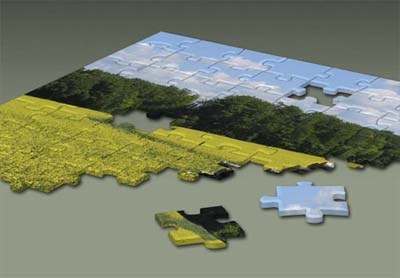 What's the missing axiom?
What's the missing axiom?
Alas, Gödel's universe does not contain most of the infinite sets that arise from the hierarchy begun by Cantor. In plain old ZFC set theory the existence of these large cardinals is undecidable, just as the continuum hypothesis is. But once you add the axiom of constructibility to ZFC, the undecidability goes away: you can prove that most of these large infinities don't exist. This is unacceptable to many set theorists: an axiom which cuts off a large chunk of the fundamental hierarchy seems too restrictive. For this and some other reasons too, Gödel's universe and the axiom of constructibility were dismissed.
But all was not lost. For some time now Woodin and his colleagues have been systematically modifying Gödel's universe to admit larger and larger infinite sets. It's this work that has led Woodin to formulate a notion of an ultimate version of Gödel's universe of sets, which can accommodate all known large cardinals, and to what might be the ultimate missing axiom. The axiom he has in mind involves the existence of certain very large infinities known as Woodin cardinals.
Woodin's optimism that he is indeed on the right path is based on some previous success. For some time, mathematicians had been puzzling over a group of classical questions central to a certain area of maths, that were undecidable under ZFC. It was clear that these questions would be settled if all sets satisfied a property called projective determinacy, but there was no reason why they should. On the face of it, projective determinacy had little to do with the hierarchy of infinity, but the approach of Woodin and his colleagues showed that the two were linked. If you're prepared to accept a certain axiom involving Woodin cardinals, then projective determinacy pops out as a consequence. They were also able to show that their axiom is essentially the only one that can give you projective determinacy, subject to some fairly general structural constraints.
This synergy between seemingly unrelated concepts lends credence to Woodin's approach to finding the ultimate missing axiom. "If this were all just a human enterprise then there's no reason to expect this kind of success. We were searching for new axioms on the basis of our intuition and in this sort of situation there's no reason to believe that the search should be successful. It's a bit like looking for a unicorn. We think we know what a unicorn looks like, but that doesn't mean we're going to find it." If you do find the unicorn, then you must be doing something right.
Success, however, is by no means guaranteed. Whether or not Woodin's ultimate axiom really makes sense is something that depends on open questions that still need to be answered. "It's very speculative," he admits. "But there are a series of conjectures formulated over the last two or three years, which if they go the right way will lead one to this unique conception of the universe of sets. If this happens, then it will settle the continuum hypothesis [as true] and many other problems that are unsolvable. To me, the whole subject is at a critical crossroads."
At the ICM 2010 Woodin made the bold and controversial prediction that his axiom will be "validated on compelling and accepted principles of infinity". But he has already shown that he's not averse to changing his mind in the light of new evidence. A few years ago he was on record as saying he believed the continuum hypothesis could actually be considered false, based on work he was doing then. He's now reversed his opinion.
But does he have any idea as to when his new axiom might be validated? "Impossible to say. It could be a year, it could be a hundred years. I personally think we will know a lot more in a year or two, though some of these conjectures look quite difficult. That's the thing: if you have a conjecture in mathematics, you don't know if it will be settled tomorrow or in a thousand years."
About the author
Marianne Freiberger is co-editor of Plus. She interviewed Hugh Woodin, Professor of Mathematics at the University of California, Berkeley, at the International Congress of Mathematicians in August 2010.
Further reading and viewing
If you're up for some technical maths, the book Roads to Infinity by John Stillwell gives a good introduction to the issues discussed in this article. It's not exactly for a general audience, but accessible to anyone with stamina and some grounding in logic and set theory.
| You can buy the books and help Plus at the same time by clicking on the link on the left to purchase from amazon.co.uk, and the link to the right to purchase from amazon.com. Plus will earn a small commission from your purchase. |
If you're up for a really advanced presentation, you can watch a video of Hugh Woodin's lecture at the International Congress of Mathematicians.
Comments
set theory
This was very interesting, easy to read, and easy to comprehend.
Different Infinites
Define (phi) as the infinite number of counting numbers, and allow (phi) to behave as a normal number.
A hierarchy of infinites is then as follows:
(phi)² = number of (positive) reals
0.6 x (phi)² = number of (positive) rationals
2x (phi) = number of integers
(phi) = number of counting numbers
(phi)/2 = number of even counting numbers
ln( phi ) = sum of the infinite harmonic series
These are all "infinite" values, but some are much large than others.
http://lesliegreen.byethost3.com/articles/infinities.pdf